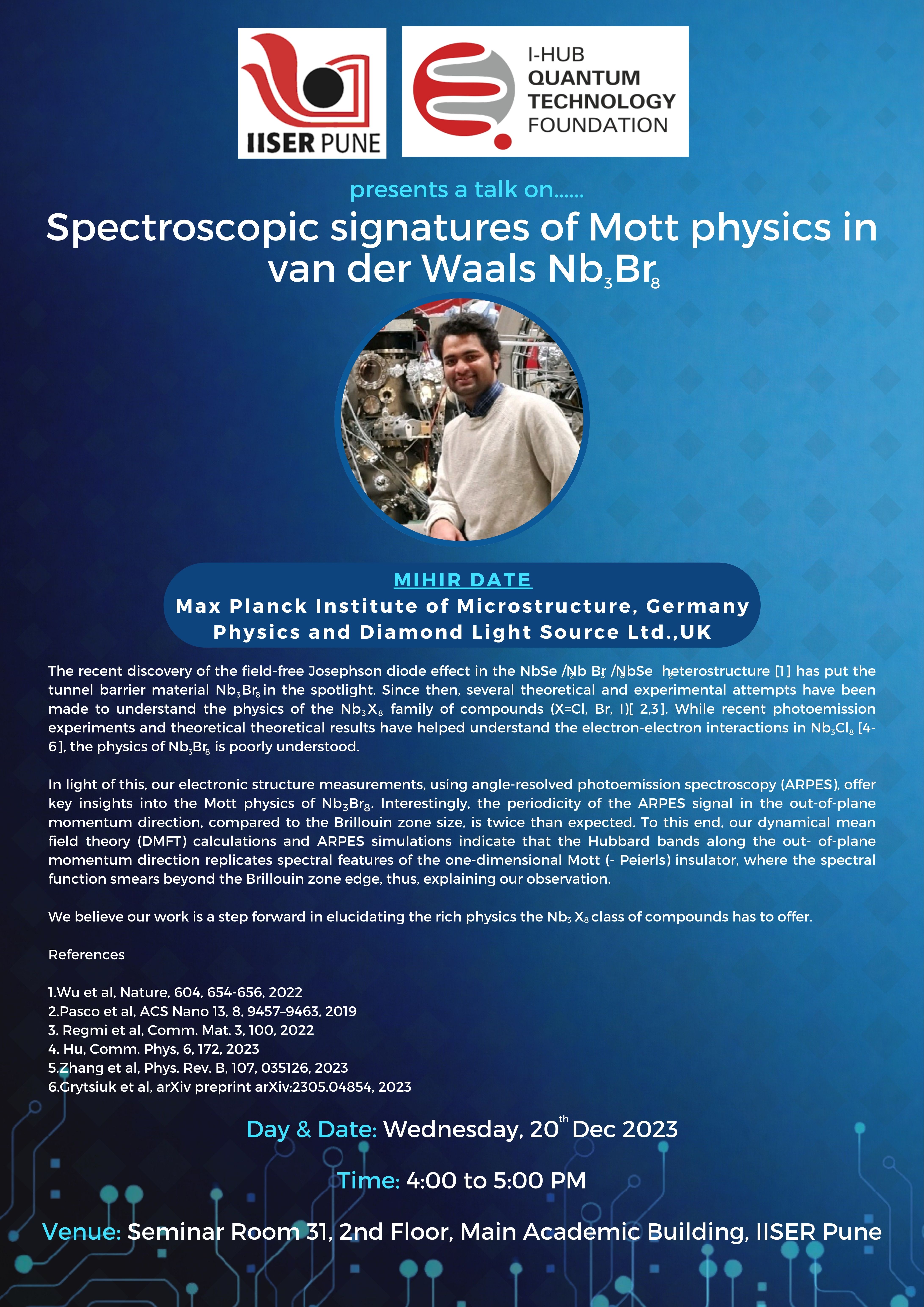
Venue
Speakers
Abstract
The recent discovery of the field-free Josephson diode effect in the NbSe2/Nb3Br8/NbSe2 heterostructure [1] has put the tunnel barrier material Nb3Br8 in the spotlight. Since then, several theoretical and experimental attempts have been made to understand the physics of the Nb3X8 family of compounds (X=Cl, Br, I)[ 2,3]. While recent photoemission experiments and theoretical theoretical results have helped understand the electron-electron interactions in Nb3Cl8 [4-6], the physics of Nb3Br8 is poorly understood.
In light of this, our electronic structure measurements, using angle-resolved photoemission spectroscopy (ARPES), offer key insights into the Mott physics of Nb3Br8. Interestingly, the periodicity of the ARPES signal in the out-of-plane momentum direction, compared to the Brillouin zone size, is twice than expected. To this end, our dynamical mean field theory (DMFT) calculations and ARPES simulations indicate that the Hubbard bands along the out-of-plane momentum direction replicates spectral features of the one-dimensional Mott (-Peierls) insulator, where the spectral function smears beyond the Brillouin zone edge, thus, explaining our observation.
We believe our work is a step forward in elucidating the rich physics the Nb3X8 class of compounds has to offer.
References
- Wu et al, Nature, 604, 654-656, 2022
- Pasco et al, ACS Nano 13, 8, 9457–9463, 2019
- Regmi et al, Comm. Mat. 3, 100, 2022
- Hu, Comm. Phys, 6, 172, 2023
- Zhang et al, Phys. Rev. B, 107, 035126, 2023
- Grytsiuk et al, arXiv preprint arXiv:2305.04854, 2023